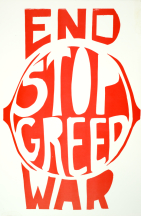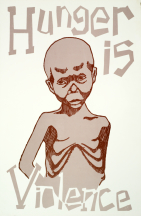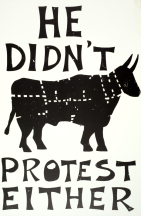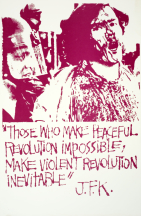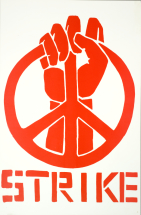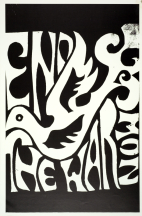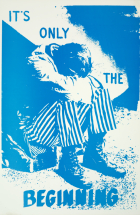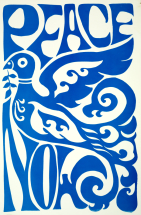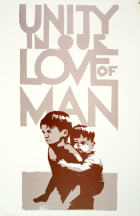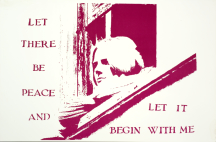This display of images and text from Unite Against the War produced by Lincoln Cushing / Docs Populi; please credit accordingly.
text from inside flap:
UNITE AGAINST THE WAR
Posters from an Exhibition of May, 1970
Within this portfolio you will find some of the most powerful poster art being produced in the United States today. The posters are unsigned, however, because the artists conceive of themselves as contributors to a cause rather than as individual spokesmen. They are students in different schools in Northern California whose work was selected from an exhibition of posters that opened May 15, 1970, at the University Art Museum, University of California, Berkeley, California.
The essay to introduce these posters was written by a scholar in the field of modern art. Professor Chipp has recently completed a study of the poster from the turn of the century to the present.
Students arranged this publication to help finance the peace movement. Additional copies can be ordered by writing. Western Star Press Box 24B Kentfield, California 94904
Copyright 1970 Students for Peace
Permission is granted to copy these posters or to reproduce them in any way that will assist in the cause of peace. Whoever uses them in any other way will be prosecuted to the fullest extent of the law.
WESTERN STAR PRESS ~
A Three Kings Production Box 248 Kentfield, California 94904
text from inside cover:
POSTERS FOR PEACE
The
first half of May, 1970 may well be remembered as that unique moment
when the youth and a large part of the public found itself working in a
common cause. Never in recent times has there been such an outpouring
of expressions for peace from citizens on all social levels, and these
expressions found some of their earliest and most impassioned voices
among the youth. While all the usual media of communication were
employed, the movement of May, 1970 is unique in that it was the
immediate cause of a flood of posters, many of which were of
exceptional power.
Unlike the posters of earlier
protest movements, these are general in theme and simple and powerful
in style. The best of them meet the highest requirements for an
effective social or political poster; text and image unified into a
single concept and a clear and forceful theme. Since the overriding aim
is the creation of an idea that is moving and not simply pleasing,
there is little or any relationship to the advertising or the "art"
poster, and their association with the advertising industry. On the
contrary, these posters have the naked and sometimes brutal impact of a
special news bulletin by an impassioned commentator. Since they were
designed and printed by the students, often on silk screens they
themselves had made and were rushed out to be posted while still wet,
the activity as a whole is closer to that of a crusader (or to a
revolutionary) than to that of an artist.
The student holding up a poster on a crowded sidewalk may have
conceived and printed it himself only a few hours earlier. The
immediacy and excitement of such a process is entirely in accord with
contemporary modes of communication (and some currents of contemporary
art), as well as with the temper of youthful protest.
Comparison with the French student revolution of May, 1968 is
inevitable. The present movement, bursting forth on almost exactly the
second anniversary of the former, also rapidly swept a nation. But,
unlike in Paris, the 1970 movement addressed itself to the public and
succeeded in carrying a large body of the public along with it. The
principal means of addressing the public is now, as it was in 1968, by
means of the poster. The two styles are remarkably similar in concept
and may even be said to constitute a distinct style. With their sources
in the realities of hard present-day social and political problems and
strong convictions about them, they achieve a direct and forceful
imagery that ignores conventional artistic poster concepts based on a
desire to please or flatter. The viewer is not so much seduced as told,
"This is the way things are, and this is what can be done about it."
Since the message consists of opinions, it can best be conveyed in the
simplest form - one or at most two primary colors arranged in simple or
even crude fiat areas - like the statements themselves. Roughness of
execution is a necessary result of haste and passion.
The contemporary poster, along with the film, has in the past few years
emerged as a major means of communication. It is admirably suited to an
age when our ideas are conveyed visually. The poster is immediate,
direct, and may be repeated for emphasis. Its natural habitat is the
street, where it addresses itself to everyman. The characteristics of
the poster, not at all coincidentally, are also those of much of modern
art: immediacy, unity of image and idea, and a simple but evocative
motif stimulating a flood of associations.
During the first week of May, 1970, several poster workshops sprang up
spontaneously in the San Francisco Bay Area Although manned by art and
architecture students, their activities were independent of any
classroom activities. Indeed, only a few of them had ever made a poster
before. While some strong posters had been produced earlier in the year
by the Women's Liberation Front in Berkeley, the great impetus came
only with the peace movement in May. Students of the College of
Environmental Design, led in organizing effective production and
distribution, and were soon joined by art students and many others.
Unlike the French students of 1968, their efforts were directed toward
enlisting the support of the public, and they opened their workshops to
it and provided posters to anyone who wished to use them.
In turn, the art history students arranged an exhibition that filled
the University Art Gallery with work from the University of California,
California College of Arts and Crafts, San Francisco Art Institute,
Stanford, and others, to which were added posters from Mexico and Paris
of May, 1968. Day by day new posters were added as they were produced.
Thus some of the high excitement of the movement itself was conveyed in
the gallery. A notable characteristic of the student poster movement is
that during this burst of creative expression, which was accompanied by
a sense that the message was heard, a great peace reigned on the campus.
Herschel B. Chipp
Professor of History of Art
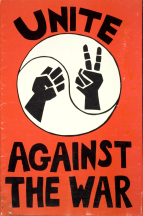 front cover
front cover 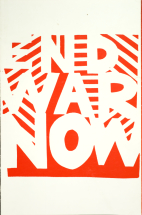 back cover
back cover 